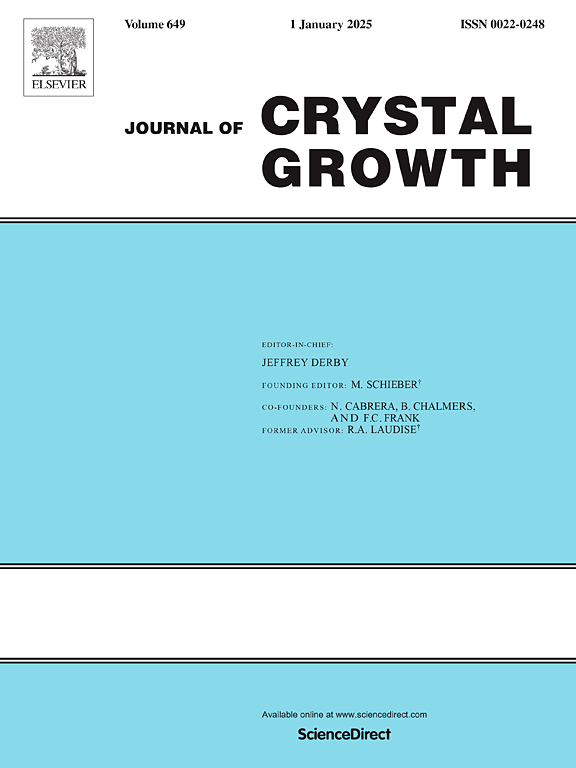ZIF-8/CeO2的快速吸附结合Z-scheme电荷迁移实现了高效的光催化性能
IF 2
4区 材料科学
Q3 CRYSTALLOGRAPHY
引用次数: 0
摘要
异质结构的构建是有效提高光催化活性的关键因素。本文通过简单的共沉淀法将CeO2紧密锚定在ZIF-8表面,成功构建了z型异质结构,加速了光生载流子的分离。在可见光辅助下,通过去除RhB和MB来评价其光催化活性。结果表明,优化后的ZC2比纯ZIF-8和CeO2具有更好的光催化降解能力,在90 min内对RhB和MB的降解率分别为92.8%和85.38%。ZC系列光催化能力的提高是由于在ZIF-8和CeO2之间构建了Z-scheme异质结构,从而有效降低了界面阻抗,增加了光电子-空穴对的分离,提高了电子利用率。此外,复合材料比表面积的增加为反应物提供了更多的活性位点,为降解有机污染物提供了更多的可能性。通过自由基捕获实验证明了多种自由基的共存,实现了污染物的高效降解。此外,本文还详细讨论了光生载体的转移及可能的光催化机理。本文章由计算机程序翻译,如有差异,请以英文原文为准。
Fast adsorption combined with Z-scheme charge migration in ZIF-8/CeO2 enables efficient photocatalytic performance
Constructing a heterostructure is a key factor in effectively enhancing photocatalytic activity. In this paper, CeO2 was tightly anchored on the surface of ZIF-8 through a simple co-precipitation method, successfully constructing a Z-scheme heterostructure and accelerating the separation of photogenerated carriers. The photocatalytic activity was evaluated by eliminating RhB and MB with the assistance of visible light. The results showed that the optimized ZC2 exhibited better photocatalytic degradation ability than pure ZIF-8 and CeO2, with a degradation rate of 92.8 % and 85.38 % for RhB for MB within 90 min. The improvement of the photocatalytic ability of the ZC series is due to constructing a Z-scheme heterostructure between ZIF-8 and CeO2, resulting in effectively reduced interface impedance and increased the separation of photogenerated electron-hole pairs and improving the electron utilization rate. Moreover, the increase in the specific surface area of the composite material provides more active sites for reactants and more possibilities for degrading organic pollutants. The coexistence of multiple free radicals was proved by free radical trapping experiments to achieve efficient degradation of pollutants. In addition, this paper will discuss in detail the transfer of photogenerated carriers and the possible photocatalytic mechanism.
求助全文
通过发布文献求助,成功后即可免费获取论文全文。
去求助
来源期刊

Journal of Crystal Growth
化学-晶体学
CiteScore
3.60
自引率
11.10%
发文量
373
审稿时长
65 days
期刊介绍:
The journal offers a common reference and publication source for workers engaged in research on the experimental and theoretical aspects of crystal growth and its applications, e.g. in devices. Experimental and theoretical contributions are published in the following fields: theory of nucleation and growth, molecular kinetics and transport phenomena, crystallization in viscous media such as polymers and glasses; crystal growth of metals, minerals, semiconductors, superconductors, magnetics, inorganic, organic and biological substances in bulk or as thin films; molecular beam epitaxy, chemical vapor deposition, growth of III-V and II-VI and other semiconductors; characterization of single crystals by physical and chemical methods; apparatus, instrumentation and techniques for crystal growth, and purification methods; multilayer heterostructures and their characterisation with an emphasis on crystal growth and epitaxial aspects of electronic materials. A special feature of the journal is the periodic inclusion of proceedings of symposia and conferences on relevant aspects of crystal growth.
 求助内容:
求助内容: 应助结果提醒方式:
应助结果提醒方式:


